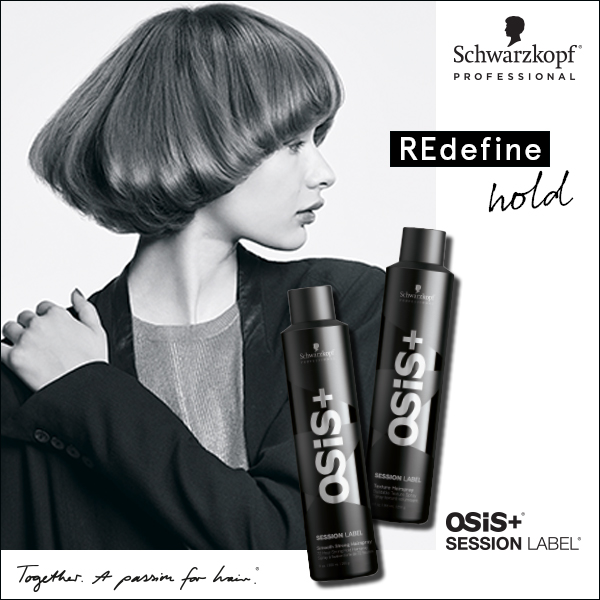Crafted Fringe: 5 Tips To Perfect Your Technique
5 Tips For Crafted Fringe
The best way to keep a client for life? Creating custom, handcrafted hair for her that she absolutely cannot get from anyone else. That’s why we are obsessing over the crafted fringe trend, especially these quickie videos by Schwarzkopf Professional® Global Ambassador Tyler Johnston (@tylerjohnstonhair), a longtime session artist whose clients include the Beckhams (that’s Victoria and David, of course) and Keira Knightley. Check out his crazy satisfying crafted fringe videos below, plus get his five top tips for honing your crafted fringe skills.
View this post on Instagram
Products Used
What is a crafted fringe?
These are not wispy, swoopy bangs—they are deliberately carved into the hair in organic shapes. “Crafting is a form of carving…you break into the edge of the hair and you craft a shape,” Tyler says. “You gradually work into the hair and find your outline. Crafting is a very organic, handmade technique.”
For Tyler, now is the time to learn this technique. “Haircuts are coming back and crafted fringes are big again,” he says. “For a while, there has been a lot of long hair on trend, either beach waves, Hollywood hair or the undone look, but I really think we are seeing a lot more girls cutting their hair midlength, around the shoulder, or boyish, more androgynous cuts—and all of these look bang-on with a cool, crafted fringe.”
View this post on Instagram
Tyler’s Top 5 Crafted Fringe Tips
1. Study her features.
Start where you always start—by studying her face and features in the consultation. “Face shape and personality are so important when it comes to a haircut—and when it comes to cutting the fringe, face shape is everything,” Tyler says. “Just because fringes are on trend that season doesn’t mean we should give everyone a fringe. It’s important that we look to the individual and look at suitability…it should enhance someone’s features.”
2. Analyze the hair’s thickness.
“Texture and thickness of hair changes my approach,” Tyler says. “If the hair is very thick, then you should take sections and cut gradually. A lot of the time, I just allow the hair to fall naturally, then I work into the hair and start to break into it.”
View this post on Instagram
3. Decide on dry or wet cutting.
“If my haircut has a very graphic feel to it, with strong outlines, I would tend to cut the fringe dry,” Tyler says. He starts by applying Schwarzkopf Professional OSiS+® SESSION LABEL® Miracle 15 into damp hair, then doing a flat wrap blow dry to retain the hair’s natural body without too much volume. On the other hand, with textured hair, he’ll cut on damp—“never too wet”—hair to examine the natural texture.
4. Choose your tool.
Tyler reaches for scissors most of the time, cutting with the point of his blades. But as a session stylist, he frequently works with wigs—and in these cases, he’ll use a razor. “It gives more of a natural feel,” he shares. “Wigs tend to be a little thicker, and it’s easier to work [a razor] into the wig and gradually reduce the weight.”
5. Finish with texture.
Once the fringe is perfectly crafted, finish with Schwarzkopf Professional® OSiS+® SESSION LABEL® Texture Hairspray, which offers buildable structure and movement.
More from
Schwarzkopf Professional®
-
Celebrity
BTC Exclusive Interview: How Tracey Cunningham Made the Switch to Schwarzkopf Professional
-
Brunette
Bronze Brunette Curls
-
Corrective Color
Color Correction Hacks: Banding, Wet Balayage & Clay Lightener
-
Celebrity
Schwarzkopf Professional Announces Tracey Cunningham & Jacob Schwartz in New U.S. Hair Color Roles
-
BTC Hair Trend Report
The Biggest Hair Color Trends of Fall 2024
-
Glossing/ Toning
5 Purple Shampoo Hacks For The “I Still See Yellow” Client
-
Haircare
FIBRE CLINIX® TAME Booster
-
Conditioners
Cleansing Curly Hair: How To Properly Remove Buildup
-
Brunette
Sunkissed Expensive-Looking Brunettes 101: Formula & Sectioning Hacks Revealed
-
Blonde
Troye Sivan’s Warm Lived-In Blonde
-
Blonde
Airtouch Toning: How Danilo Bozic Creates A Seamless, Blended Blonde
-
Curls
3 Key Tips for Defined Curls Without Frizz
-
Gray Coverage
Gray Coverage Clients Will Help Build A Consistent Income—Here’s How
-
Brunette
Your Guide To Lifting & Toning Sun-Kissed Brunettes
-
Industry News
Schwarzkopf Professional® Relaunches IGORA VIBRANCE Featuring Legendary Athletes
-
Brunette
Lily Collins’ Suede Brunette Bob
-
Oil
4 Ways to Use A Bonding Hair Oil
-
Business
Why Promoting Women to Leadership Positions is the Key to a Successful Hair Brand
-
Bridal
Common Bridal Hair Challenges We Don’t Talk About
-
Hairsprays
OSiS+ Elastic Hairspray
-
Curls
OSiS+ Curl Jam
-
Curls
OSiS+ Tipsy Twirl
-
Curls
OSiS+ Bounty Balm
-
Monthly Product Launch List
9 New Product Launches To Bring Into Summer








